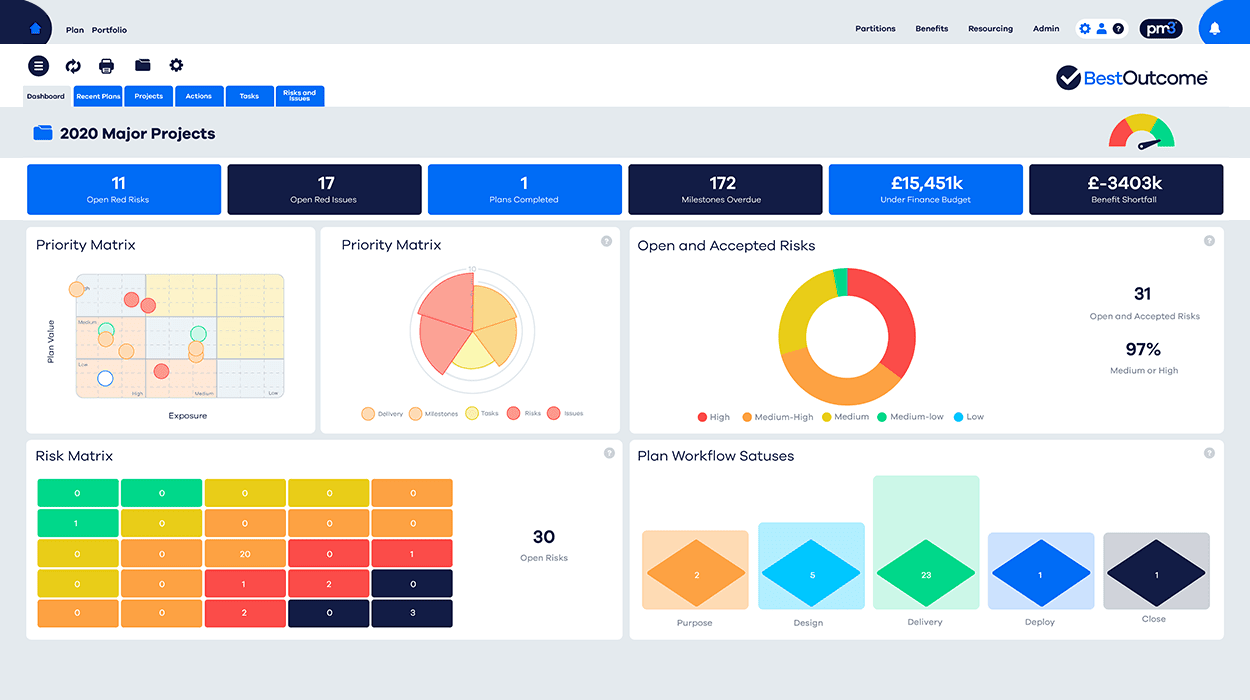What is the best way to plan a project?
Whenever we get asked to review a project or a programme, the first artefact that we always ask to see is the project or programme plan.
We are often surprised by the quality and completeness of these plans, which is why we decided to publish this article.
For some very important projects and programmes, we have seen the following:
“I’ve only been on this project for five days and I’m already seven days behind!”
(Overheard from a project team member)
We think that this is because in many cases there is basic lack of understanding of how to develop a good project plan.
So without further ado, lets look at the 10 key elements that will help you plan a project better.
Too often, plans are developed by one person in a darkened room with little or no reference to others.
Developing a plan collaboratively with team members who can contribute to a project plan is a good way of achieving buy-in and also a way of ensuring that key milestones and activities are not missed.
Estimates are also likely to be more accurate if more than one person is checking an estimate and contributing to the project plan.
We alluded to this in Step 1 but it deserves a separate guideline as it’s so important.
It goes without saying that a plan with poor estimates is one that is going to fail. For key tasks and milestones ask two or more team members to independently (no conferring) estimate the tasks or milestone.
They then come back together and compare estimates and assumptions.
If they differ, they discuss reasons why they are different and then redo the estimates. This continues until both estimates are within an acceptable error range.
We see too many milestones that are really activities.
Milestones are when something has been achieved and can be prefaced by the word “when”.
Activities usually start with verbs, e.g. gather requirements.
Milestones are important in a plan as they help visualise what has been achieved and how far along you are on the path to your final destination.
It is important for everyone to know when a milestone has been achieved.
This is why your milestones need to be SMART (Specific, Measurable, Attainable, Relevant and Time-bound).
SMART is an acronym that usually applies to objectives but can also be applied to milestones. For example, “When the requirements have been gathered” is not a good milestone.
A ‘SMARTer’ one would be: when the requirements have been signed off and agreed.
This example is a good milestone as it is explicit in terms of what needs to be done for the milestone to be achieved, and it enables the team to progress forward with delivering the project.
Whatever the political pressure, be honest about what can be achieved by when.
Impossible deadlines demotivate the team and the project will only fail to deliver against these impossible timescales.
A plan is a living document but too many plans are developed and then barely looked at or updated.
Plans should be regularly updated with progress and slippage.
The plan needs to be updated or re-planned if more information becomes available that indicates that the current plan is no longer valid.
Plan in detail for the next phase and plan at a high level for phases of the project that are a long way in the future.
Too much time is often wasted in planning to low levels of detail for activities many months in the future.

Work with the team to develop the top-down milestones that need to be delivered.
For some of these milestones you then develop a bottom-up plan that ratifies the dates of the top-down milestones.
Of course, if the milestones need to be changed after the bottom up planning, then this needs to happen.
There are different uses of a project plan, from assigning technical tasks to the team to communicating progress to the sponsor and senior stakeholders.
All too often we see a detailed Gantt chart being used to communicate progress to senior stakeholders.
Better to have two levels of the same plan; a high level milestone plan for senior managers and a more detailed one for the team.
Both plans should be different lenses of the same plan.
Ensure that there is one person who is accountable for the completion of each task or milestone.
There may be a number of people who need to contribute to a risk or milestone, but one person must be ultimately accountable.
Having multiple people accountable can lead to confusion about who is doing what which often leads to milestone slippage.
There must be no ambiguity in who is accountable for each task or milestone.
For example, a task may take five days of actual effort. Some project managers assume that each resource assigned to their project is available for 100% of every day or week.
Project planners must allow for sickness, downtime, administration etc.
Rather than assuming five days availability for each week, a more realistic availability would be 4 or 4.25 days. The exact number, of course, will depend on your organisation.
Find out more about our PM3 software and discover how it can be a valuable asset in your project management toolkit.

Our products help you deliver successful change programmes and projects by always focusing on the overall business outcomes. Find out how our products can help you.
Discover PM3 Unlock the Potential of PM3 – Request a Demo